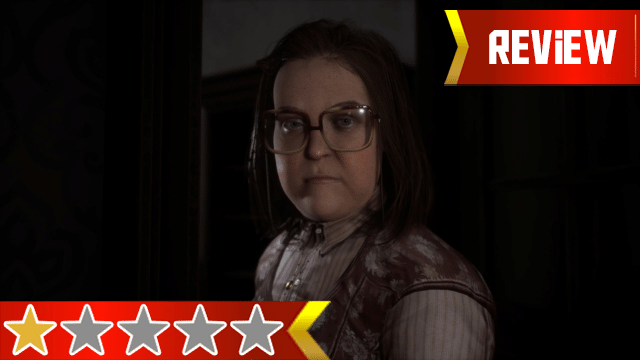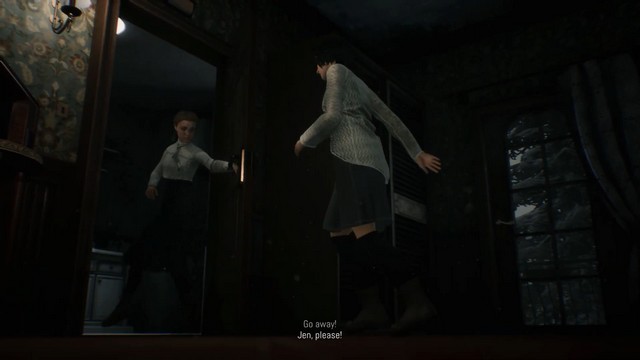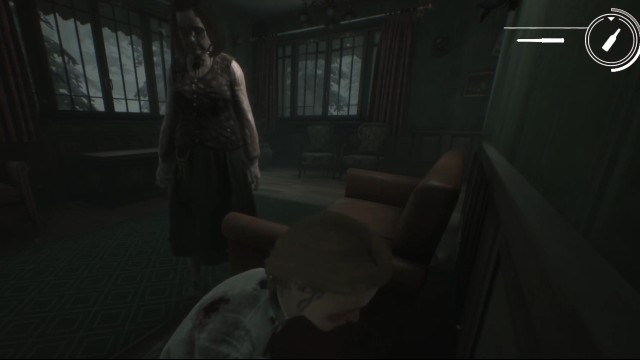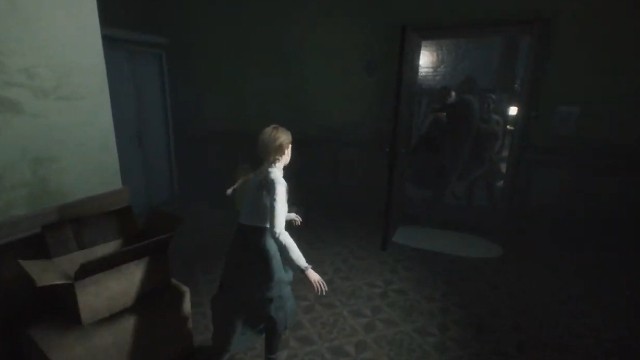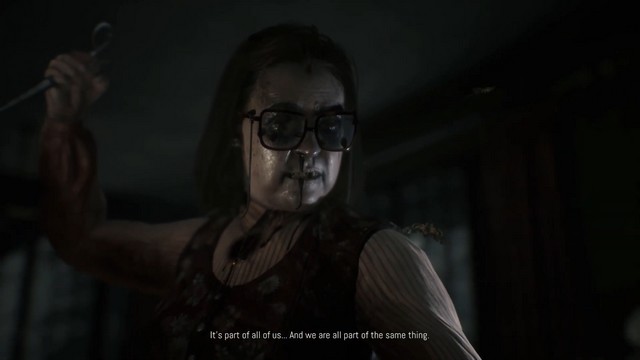Remothered: Broken Porcelain review for PC, PS4, Switch, and Xbox One.
I’ve reviewed around 200 titles since I started writing about games professionally, and I finished each of them. It doesn’t matter whether I’m having fun or not; I play until the credits roll. At least that was the case until this review. Remothered: Broken Porcelain, ironically, is the first game to break me. It’s an absolute mess that borders on unplayable. I estimate I completed around half of it before the 50th or so game-breaking bug I encountered convinced me that my time was better spent doing anything else.
I can only hope that this review finds someone who is about to make the mistake of playing Remothered: Broken Porcelain and wards them off from wasting hours of their time trying to fight against sloppy AI, broken collision, and terrible gameplay mechanics to check out what story there is to be found here.
| CPU | GPU | RAM | Storage | Resolution |
|---|---|---|---|---|
| AMD chip based on Ryzen, 8x cores, 7nm Zen 2 | Custom AMD Navi GPU with ray tracing | Unknown | SSD | 8K |
Living it up at the Ashmann Inn
Remothered: Broken Porcelain is a sequel to Remothered: Tormented Fathers. I never played that game, so that’s the last you’ll hear about it. I believe the intro section to Broken Porcelain covers the previous game’s events, but the plot is so shredded that I can’t be sure.
The protagonist of the game is Jennifer, who is sent to work at the Ashmann Inn after being expelled from a boarding school. After she sees something she wasn’t supposed to, Jennifer is attacked by the head maid, Andrea, who transforms into a ghoulish, scissor-wielding version of herself.
Jennifer’s main objectives are to escape the hotel and discover the secrets behind the drug Phenoxyl, which is causing the ill effects amongst the inn staff. Fortunately for Jen, she is immune to the drug’s hypnotizing effects, which also has something to do with moths. For the life of me, I could never figure out if the moths were metaphorical or not. Players do get the power to remotely control a moth and interact with objects remotely, but who knows what’s really going on.
In medias ridiculous
The plot bounces around so much it’s hard to keep track of what’s going on. The game begins with Jennifer as an old woman recounting the story to a young man in what I assume is the present day. However, it then drifts back to the 1970s, then forward again to the inn years after the incident there.
I’m not sure if it was a glitch or just poor direction, but cutscenes started and stopped with jump cuts. One thing that made it so hard to keep track of what was going on is that many cutscenes felt like they ended too soon. A scene would play out, and then it would jump cut to me, controlling Jennifer in a completely different area than she was just shown in.
Remothered: Broken Porcelain also commits one of the greatest storytelling sins. The main cast, Jennifer, her friend Linn, Andrea, and the inn manager, Richard Felton, all know each other before the story begins. Because the story bounces between time periods so often, all the characters talk about people, places, and events for which the player has no reference.
For example, at the beginning of the game, Jennifer is angry with Linn, but there’s no explanation of why or what the two characters’ relationship is. It isn’t until later on that you learn that they’re best friends. This lack of context prevents the player from establishing an emotional connection, especially since Linn is framed as antagonistic at the beginning of the game.
The entire plot suffers from poor pacing, abrupt exposition drops, and reliance on the player connecting puzzle pieces that aren’t even presented to them. Even without the massive amount of glitches, the story would need a massive overhaul.
Glitches in me britches
Remothered: Broken Porcelain is busted mechanically. I’ve never played a game this glitchy before. These aren’t just slight annoyances either. I encountered tens of game-breaking bugs that resulted in deaths or reloads.
The most glaring technical issue is the game’s collision. Jennifer will often get hung on corners of objects and sometimes will just remain stuck there until you can trick an enemy to shove you out of your conundrum or reload the game. However, sometimes an enemy shove just makes things worse as they can just push you further into an object.
Jennifer starts the game relatively defenseless, which would give the initial sections a frantic feel. However, when Andrea shoves me, and I clip into a table and can’t move, the whole horror veneer peels right off. Of course, that all depends on whether Andrea’s AI can even find me.
Odd automaton
The enemy AI is absolutely horrible. Sometimes, it just stops working. I had times when I was getting chased and ducked behind a chair right in front of an enemy, and they’d be completely baffled. Other times I’d be pressed against a wall, and a foe could see me straight through it. Additionally, the AI sometimes just quit working temporarily, and the enemy would just stand in one spot repeating the same lines over and over.
Things are bad with just one AI following you, but later on in the game, when two or three are involved, it gets into slapstick territory. I was running from three enemies during one sequence and ducked into a door, which led to a dead end. I thought I was screwed, so imagine my surprise when all three AIs tried walking through the door at the same time, and their poor collision prevented them from entering. They just bounced off each other staring straight at me. After a minute or so, they abruptly exited “search mode,” and turned around and walked off as if I’d escaped.
Of course, one might think that the AI being so bad might make the game easier. This isn’t the case, though. Stealth-based games only work well when players can gauge how an AI will likely react to a situation. The AI in Broken Porcelain goes from “guy in Metallica’s One video” to omniscient in the blink of an eye. This completely removes the horror element and requires the player to resort to trying to cheese enemies because the playing field isn’t level.
We’ll get them next time
The game is also often unclear on what players have to do and why they have to do it. Sometimes, players are given a very succinct objective like, “Find Room 213.” Other times, you’ll get something like, “Find a way to startle the watch dog,” which could mean anything. The solution (like many in the latter part of the game) turns out to be that Jennifer needs to use her powers to control a moth to fly it over to the dog and make it buzz around its head. This then makes Andrea walk over to the barking dog (which has already been barking at the same rate the whole time you’ve been in the room), get mad that the dog is agitated, and stab it to death with her scissors. That’s right, not only does this situation not make sense, but it introduces that famous trope that badly-written horror media uses to get a reaction from people: the needless killing of animals.
However, Broken Porcelein‘s issue isn’t just that some objectives are needlessly opaque. It’s that many of them feel like overly complicated and pointless filler content. For example, early on, when running from Andrea, there’s a safe located in a room that contains a key to a balcony door that players must unlock to progress. To get it, players have to find a safe, take the phone number from the label on it, and then return to a previous area to use a phone to reset the safe code. Then, players must memorize this code, return to the room with the safe, and get the key. This is all required to enter Andrea’s room so that when she comes in and falls asleep, players can steal the master keys for the inn from her.
The convoluted process above makes no sense—especially given that the balcony door is mostly glass and could just be kicked in—but it would at least be palatable if it ended with Jennifer getting the master keys and moving on to the next section of the game. It doesn’t. Instead, Andrea wakes up, takes the keys back, and starts one of the worst boss battles in the history of gaming, which has players running around the halls they were just in trying to stealth attack Andrea enough times for her to pass out and drop the keys.
In horror games, objectives work best when they feel vital to the player’s survival. It’s the genre that’s least tolerant of fluff, which is why horror titles are usually relatively short. I played Remothered: Broken Porcelain for around 4 hours before I couldn’t stomach any more, and at least half of that playtime was spent accomplishing menial tasks or replaying content I had already played because I got stuck on a table or a trigger misfired, and a door didn’t open or something. I’ve seen estimates that the game only lasts 5-6 hours, so there’s a lot of fluff here compared to the overall playtime.
Remothered: Broken Porcelain Review | The Final Verdict
I’m not a fan of giving games lousy review scores. I’m usually pretty generous in my praise, maybe to a fault at times. It pains me to be as critical of Remothered: Broken Porcelain as I have to be because I know there’s a whole team of people behind its development. I also know there has to be a lot of frustration there because something must have gone terribly, terribly wrong for Broken Porcelain to be released in this state.
If the game is patched extensively, there are hints of an interesting enough story to make it worth a playthrough. However, at launch, the amount of game-breaking bugs present makes Broken Porcelain practically unplayable. It’s only because I had the duty to review it that I got as far in as I did, and I doubt the typical gamer will have the patience to get past the first hour.
Remothered: Broken Porcelain was reviewed on PC via digital code provided by the publisher.
-
Full of glitchy gamebreaking bugs.
-
Plot is convoluted and cutscenes end too early.
-
Objectives are either needlessly complex or opaque.
-
AI alternates between completely braindead and omniscient at random.
